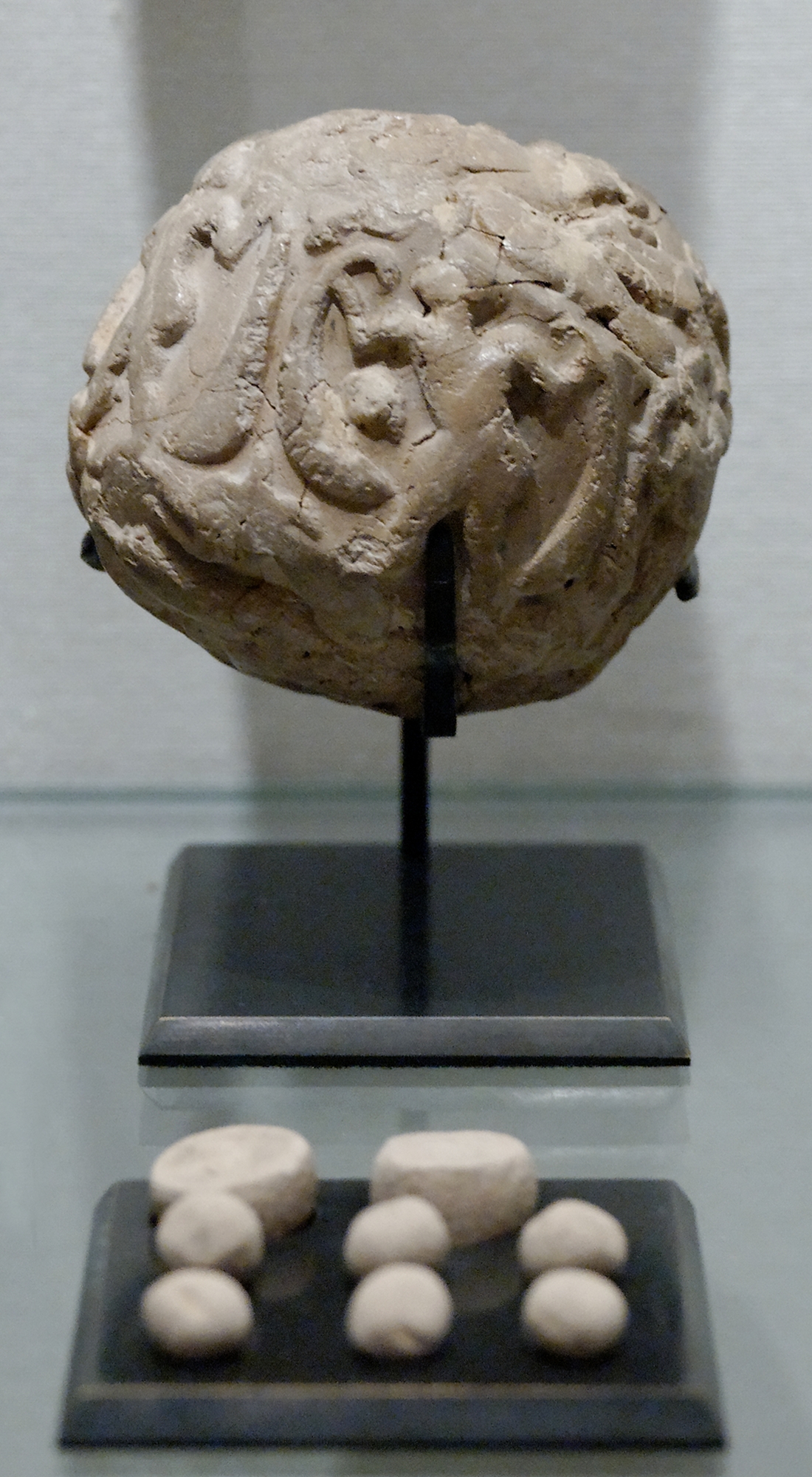Prehistory
Devices have been used to aid computation for thousands of years. The earliest known counting devices are clay tokens that were in use before 4000 BC. A given token might represent one sheep or ten sheep. To represent a count of 32 sheep, you would take three 10-sheep tokens and two 1-sheep tokens and seal them in a clay container.
| Clay Counting Stones |  |
Abacus
By about 2500 BC, counting devices had been abstracted away from counting a particular thing and abacuses first appeared in Sumeria. These devices rely on the user moving beads or stones to represent numbers and to do arithmetic on them. Since then, many other forms of reckoning boards or tables have been invented. In a medieval European counting house, a checkered cloth would be placed on a table, and markers moved around on it according to certain rules, as an aid to calculating sums of money.
| Abaci were used in the ancient Near East, Europe, China, and Russia, centuries before the adoption of the Hindu-Arabic numeral system. The exact origin of the abacus has not yet emerged. It consists of rows of movable beads, or similar objects, strung on a wire. They represent digits. One of the two numbers is set up, and the beads are manipulated to perform an operation such as addition, or even a square or cubic root. |  |
Antikythera Mechanism
The ancient Greeks used complex devices to compute the timing of astrological events and the astrolabe from ancient Greece. The The Antikythera Mechanism was a clockwork device of complexity that would not be seen again until the 14th century. It was an ancient Greek hand-powered orrery, described as the oldest example of an analogue computer used to predict astronomical positions and eclipses decades in advance. It could also be used to track the four-year cycle of athletic games which was similar to an Olympiad, the cycle of the ancient Olympic Games.
| A 2007 recreation of the Antikythera Mechanism, thought to have been originally created just around 200 BCE |  |
The Pascaline
In the 1600s, the first mechanical calculators were developed. A teenager named Blaise Pascal (later to become a famous mathematician) was one of their inventors. Pascal began to work on his calculator in 1642 when he was only 19 years old. He had been assisting his father, who worked as a tax commissioner and sought to produce a device that could reduce his workload.
| The Pascaline could do addition and subtraction including automatically carrying from one place to the next. |
Binary Numbers
Many other mathematicians of the 17th century tried their hand at building their own calculators, including Gottfried Leibniz who described a machine that would be implemented using binary numbers.
| Leibniz's notes on binary numbers | |
| Leibniz also refined the binary number system, which is the foundation of nearly all digital (electronic, solid-state, discrete logic) computers, including the Von Neumann architecture |  |
Adapted from Chemeketa Community College's Computer Science Dept's CS160 Reader
© Copyright  This work is licensed under a Creative Commons Attribution-NonCommercial 4.0 International License.
This work is licensed under a Creative Commons Attribution-NonCommercial 4.0 International License.
